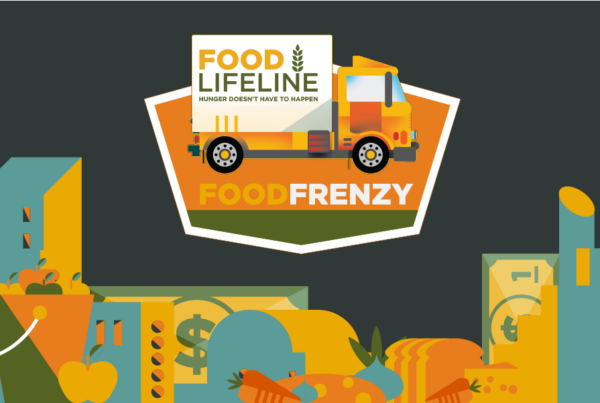The latest data shows that 1 in 6 Washington households were food insecure in 2012.
Food Security in the United States
According to new data released by the U.S. Department of Agriculture (USDA) Economic Research Service, 1 in 6, or 14.6%, of Washington households were food insecure at some point during 2012. This means that these households were uncertain of having or were unable to acquire enough food to consistently meet the daily needs of all members of their households.
Unfortunately, Washington continues to lag behind our neighbors in ending hunger, ranking 22nd in overall food insecurity. Oregon ranks 30th nationwide at 13.6%, and Idaho ranks 24th at 14.3%.
Washington falls even further behind when it comes to helping those households struggling with very low food insecurity. Washington ranks 15th nationwide with 6.0% of all households being forced to change how much they eat, when they eat and what they eat because they lack money or other resources to access food.
These rates have remained essentially unchanged since the beginning of the Great Recession in 2008.
As Congress reconvenes next week, and as the Farm Bill debate continues, Food Lifeline believes this data further strengthens the argument that now is not the time for deep cuts to the Supplemental Nutrition Assistance Program (SNAP, formerly food stamps) or other federal anti-hunger programs.
“Given the level of food insecurity that continues to persist in our state, our entire congressional delegation needs to fully understand the tremendous benefits SNAP has to help feed hungry families and strengthen local economies. Our lawmakers need to stop asking how much to cut from SNAP and other low-income programs and start acting on what is going to lift families out of poverty,” said Linda Nageotte, CEO of Food Lifeline. “Far too many people in our state continue to struggle with hunger, and we urge our Members of Congress to pass a Farm Bill that protects federal anti-hunger and nutrition programs.”
Overall Statistics
- 14.5%, or 17.6 million, of U.S. households were food insecure at some time during 2012. This means these households were uncertain of having, or unable to acquire, enough food to meet the daily needs of all members of their households. Food insecure households include those with low and very low food security.
- 8.8%, or 10.7 million, of U.S. households had low food security in 2012. These households got enough food to avoid substantially disrupting when or how much they ate by consuming less nutritious diets, and by using federal food assistance programs and food banks.
- 5.7%, or 7.0 million, of U.S. households had very low food security at some time in 2012. Members of these households had their normal eating patterns disrupted and food intake was reduced because of lack of money or other resources to obtain food.
- 384,362, or 14.6%, of households in Washington were food insecure in 2012. That’s 22nd in the nation.
- 160,589, or 6.1%, of households in Washington struggled with very low food security, experiencing deeper hunger and cutting back or skipping meals on a more frequent basis. That’s 15th in the nation.
- Washington still lags behind its neighbors in ending hunger. Oregon ranks 30th overall for food insecurity at 13.6%, while Idaho ranks 24th, with 14.3% of households experiencing low or very low food security.
- Nationally, more than 48.9 million people lived in households that were food insecure in 2012 – 14.1 percent of all adults and 21.6 percent of all children lived in food insecure households.
About the USDA Report
Since 1995, the United States Department of Agriculture, using data from surveys conducted annually by the Census Bureau, has released national and state estimates of the number of people in households that are food insecure. Food insecure households are those that are not able to afford an adequate diet at all times in the past 12 months. For states, USDA uses three-year averages to give a better estimate (with a smaller margin of error) of the number of households experiencing food insecurity. Experts agree that the Census/USDA measure of food insecurity is a conservative one, with the result that only households experiencing substantial food insecurity are so classified.





